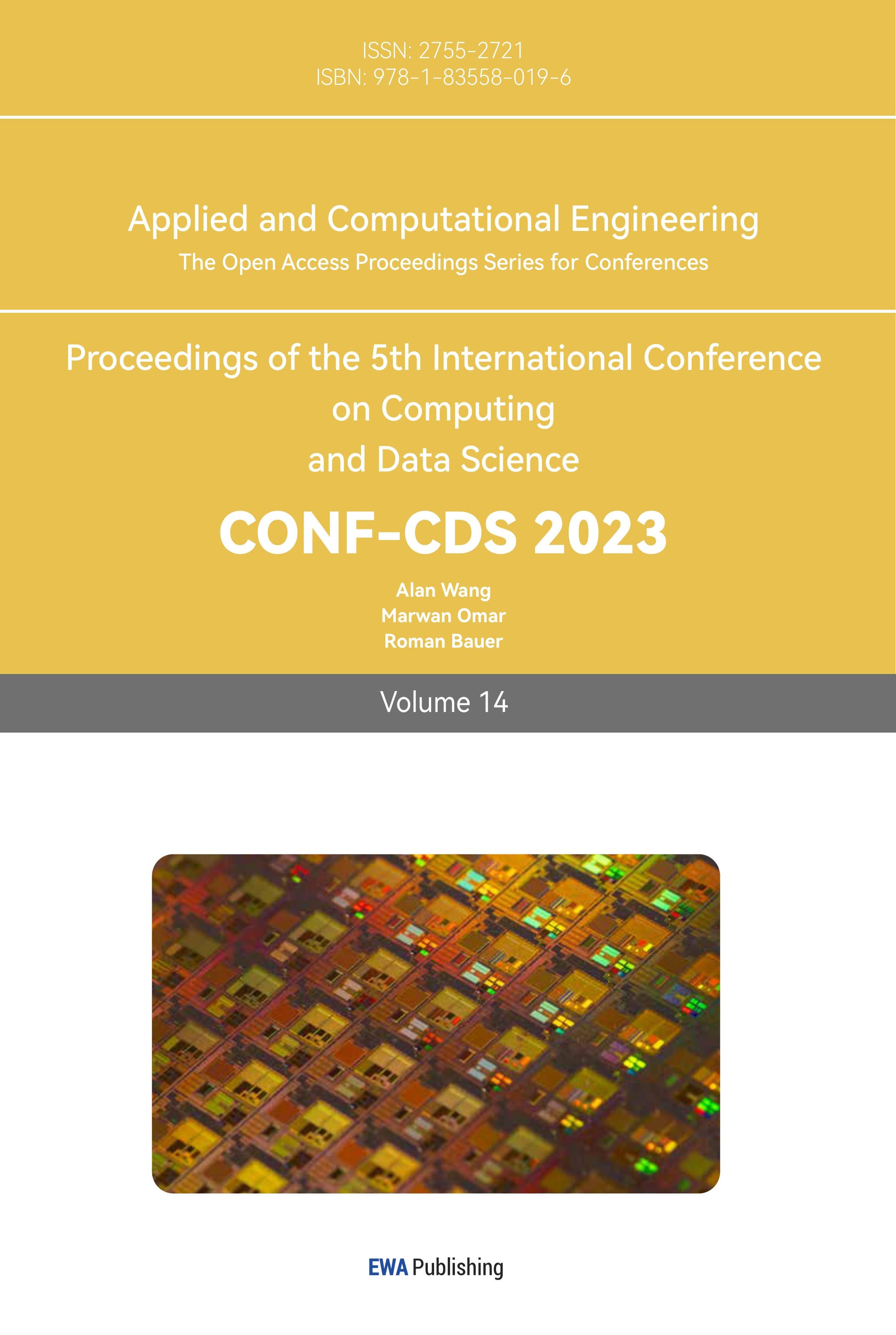References
[1]. Pan, Bo. Theoretical Study and Circuit Design of Ultra-low Metastable High-speed Pipelined-SAR ADC. University of Electronic Science and Technology, (2021).
[2]. Yang, CX., Zhang, C., Wang, ZQ., Wang, ZJ., Xie, X., Jiang, HJ. Design of Elastic Buffer of PCS Layer Based on 10 Gbase-KR Protocol. Microelectronics and Computer 35(03),14-18(2018).
[3]. Xu, Y., Lin, Y., Yang, HG. The FPGA Dual-port Memory Mapping Optimization Algorithm. Journal of Electronics and Informatics 42 (10),2549-2556(2020).
[4]. Li, ZN., Li, JJ., Wang, AX., Zhong, SD. Design of High-speed Data Communication Interface Across Clock Domain. SCM and embedded system application 18(03), 13-18(2018).
[5]. You, BX., Liao, YF., Ren, WL., Ma, J. FPGA in Data Rearrangements. Fire Control Radar Technology 50(03), 59-6(2021).
[6]. Li, ZN., Li, JJ., Wang, J., Jin, SW. Asynchronous On-Chip Network Communication Mechanism for Dual Mode Fusion. Small Microcomputer system 40(10), 2241-2246(2019).
[7]. Zhu, Yu., Dong, GT., Zhang, S. Research on The Metastable Processing Technology of FPGA Software. China Inspection and Testing 28(03), 14-17(2020).
[8]. Tian, Y., Fan, YY., Li,ZW., Liu, WH., Xue, QN. Measurement of Metastable Parameters Based on FPGA. Microelectronics and Computer 33(10), 46-49(2016).
[9]. Ding, H. Integration of A 32K-16 MHz Low-power, High-precision Clock Generator on A CMOS Chip. Huazhong University of Science and Technology, (2020).
[10]. Chen, TT., Lu, F., Wan, SQ. et al. A Delay-controllable Asynchronous FIFO Circuit Design. Microelectronics 52(1), 42-46(2022).
[11]. Lei, W., Li, JY. Design of A Broadband Signal Acquisition System Based on Alternating Sampling of Four-way ADC Chips. Electronics Technology 34(09), 30-35(2021).
Cite this article
Liu,S. (2023). Design and analysis of FIFO system based on basic circuit functions. Applied and Computational Engineering,14,1-6.
Data availability
The datasets used and/or analyzed during the current study will be available from the authors upon reasonable request.
Disclaimer/Publisher's Note
The statements, opinions and data contained in all publications are solely those of the individual author(s) and contributor(s) and not of EWA Publishing and/or the editor(s). EWA Publishing and/or the editor(s) disclaim responsibility for any injury to people or property resulting from any ideas, methods, instructions or products referred to in the content.
About volume
Volume title: Proceedings of the 5th International Conference on Computing and Data Science
© 2024 by the author(s). Licensee EWA Publishing, Oxford, UK. This article is an open access article distributed under the terms and
conditions of the Creative Commons Attribution (CC BY) license. Authors who
publish this series agree to the following terms:
1. Authors retain copyright and grant the series right of first publication with the work simultaneously licensed under a Creative Commons
Attribution License that allows others to share the work with an acknowledgment of the work's authorship and initial publication in this
series.
2. Authors are able to enter into separate, additional contractual arrangements for the non-exclusive distribution of the series's published
version of the work (e.g., post it to an institutional repository or publish it in a book), with an acknowledgment of its initial
publication in this series.
3. Authors are permitted and encouraged to post their work online (e.g., in institutional repositories or on their website) prior to and
during the submission process, as it can lead to productive exchanges, as well as earlier and greater citation of published work (See
Open access policy for details).
References
[1]. Pan, Bo. Theoretical Study and Circuit Design of Ultra-low Metastable High-speed Pipelined-SAR ADC. University of Electronic Science and Technology, (2021).
[2]. Yang, CX., Zhang, C., Wang, ZQ., Wang, ZJ., Xie, X., Jiang, HJ. Design of Elastic Buffer of PCS Layer Based on 10 Gbase-KR Protocol. Microelectronics and Computer 35(03),14-18(2018).
[3]. Xu, Y., Lin, Y., Yang, HG. The FPGA Dual-port Memory Mapping Optimization Algorithm. Journal of Electronics and Informatics 42 (10),2549-2556(2020).
[4]. Li, ZN., Li, JJ., Wang, AX., Zhong, SD. Design of High-speed Data Communication Interface Across Clock Domain. SCM and embedded system application 18(03), 13-18(2018).
[5]. You, BX., Liao, YF., Ren, WL., Ma, J. FPGA in Data Rearrangements. Fire Control Radar Technology 50(03), 59-6(2021).
[6]. Li, ZN., Li, JJ., Wang, J., Jin, SW. Asynchronous On-Chip Network Communication Mechanism for Dual Mode Fusion. Small Microcomputer system 40(10), 2241-2246(2019).
[7]. Zhu, Yu., Dong, GT., Zhang, S. Research on The Metastable Processing Technology of FPGA Software. China Inspection and Testing 28(03), 14-17(2020).
[8]. Tian, Y., Fan, YY., Li,ZW., Liu, WH., Xue, QN. Measurement of Metastable Parameters Based on FPGA. Microelectronics and Computer 33(10), 46-49(2016).
[9]. Ding, H. Integration of A 32K-16 MHz Low-power, High-precision Clock Generator on A CMOS Chip. Huazhong University of Science and Technology, (2020).
[10]. Chen, TT., Lu, F., Wan, SQ. et al. A Delay-controllable Asynchronous FIFO Circuit Design. Microelectronics 52(1), 42-46(2022).
[11]. Lei, W., Li, JY. Design of A Broadband Signal Acquisition System Based on Alternating Sampling of Four-way ADC Chips. Electronics Technology 34(09), 30-35(2021).









